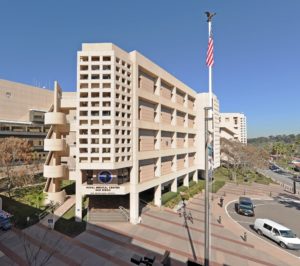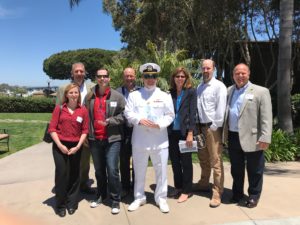Throughout Reid Middleton, we perform a lot of work for the federal government. Here in our San Diego office, that is especially the case, as the Navy has been one of our key clients the last 13 years. Working with the federal government can be quite different from working with the private sector, partly because of the terminology, partly because of the requirements, and especially because of the acquisition processes. Although potentially a challenge to the timeliness of the contract, the acquisition processes not only protect the government (and ultimately the tax payer), but they also protect us, the contractors. For projects where the timeliness of the acquisition process is a primary concern of those performing services for the federal government, it benefits both sides to do whatever we can to collaborate.

Collaboration = Efficiency
Collaboration can and should be beneficial to all parties. Collaboration can be accomplished in many different ways, from the beginning to the end of a project. For any project, it is important that each team perform their required functions, however, working together to the maximum extent possible helps speed up the process, and also makes it smoother. A great example of this is a project on which we are currently awaiting execution of a contract. After receiving the scope of work on this project, we proceeded down a pretty standard path of submitting Requests for Information (RFIs) regarding the scope and then, ultimately, putting together our fee proposal. Very quickly upon receipt of our fee proposal, the government team responded to us that they would like to have a scoping discussion. This was a critical decision, and in my opinion, a great representation of collaboration from the government team. During the scoping discussion, we ultimately learned that we had an understanding of the scope that was much more detailed than the government’s expectations, and thus were greatly out of line with their budget. The government team could have spent much more time trying to evaluate the proposal in great detail in order to put themselves in a position to negotiate, but instinctively they decided that having a conversation about our understanding of the scope and their understanding of the scope would be much more efficient. We ended up having one more scoping discussion afterwards, and then when we did get to negotiations, it was simple and quick.
Collaboration = Clarity
Another example of good collaboration is a project where the desired end product is a little unclear at the beginning of the project. It is quite common that projects experience changes from start to finish, but these projects are the type that have the likelihood of experiencing drastic change. Two projects come to mind for this scenario, each of varying degrees. The first example is an ongoing project where the end product was pretty well defined, however, since execution of the project, new requirements have been adopted and both the government team and the design team are learning the requirements and how this project will address these changes. The other project is a scenario where an existing facility needs to be repaired and the extent of the repairs is unknown. The project included both investigation and design and the requirements for the repairs became clearer and clearer through the investigation. In both of these cases, the success in collaboration came from the fact that all team members approached the issues from a position of genuinely wanting to do what is right for both the project and the client. In both cases, the teams have worked as diligently as possible to get to a point of understanding the requirements of the changes in order to make the required contract modifications as effortless as possible. Contract modifications still take time, and they always will, however it feels good to know that the client is in a position where they understand the requirements of their project and that pending this modification, they can expect to receive the product or services necessary. It also feels good for us as the contractor team that we have a scope of work that addresses what the client needs and, once the modification is executed, we have the budget necessary to execute it successfully.
Collaboration = Success

For most project managers, I am sure none of this is new. This is one of those “refresher courses” on fundamentals. Not only during negotiations, but through the life of a project, we should always be working as a team to provide the best project and the best experience that we can. Each member of the team has a different function to perform and it is important for them to perform that function to their fullest potential. My experience has been that collaboration from both sides often leads to the most successful projects, and that may simply be because there has been more communication, and thus a more thorough understanding of requirements from all parties. I encourage everyone to communicate, be collaborative, this should pay off for everyone involved and lead to some of your most enjoyable projects.


